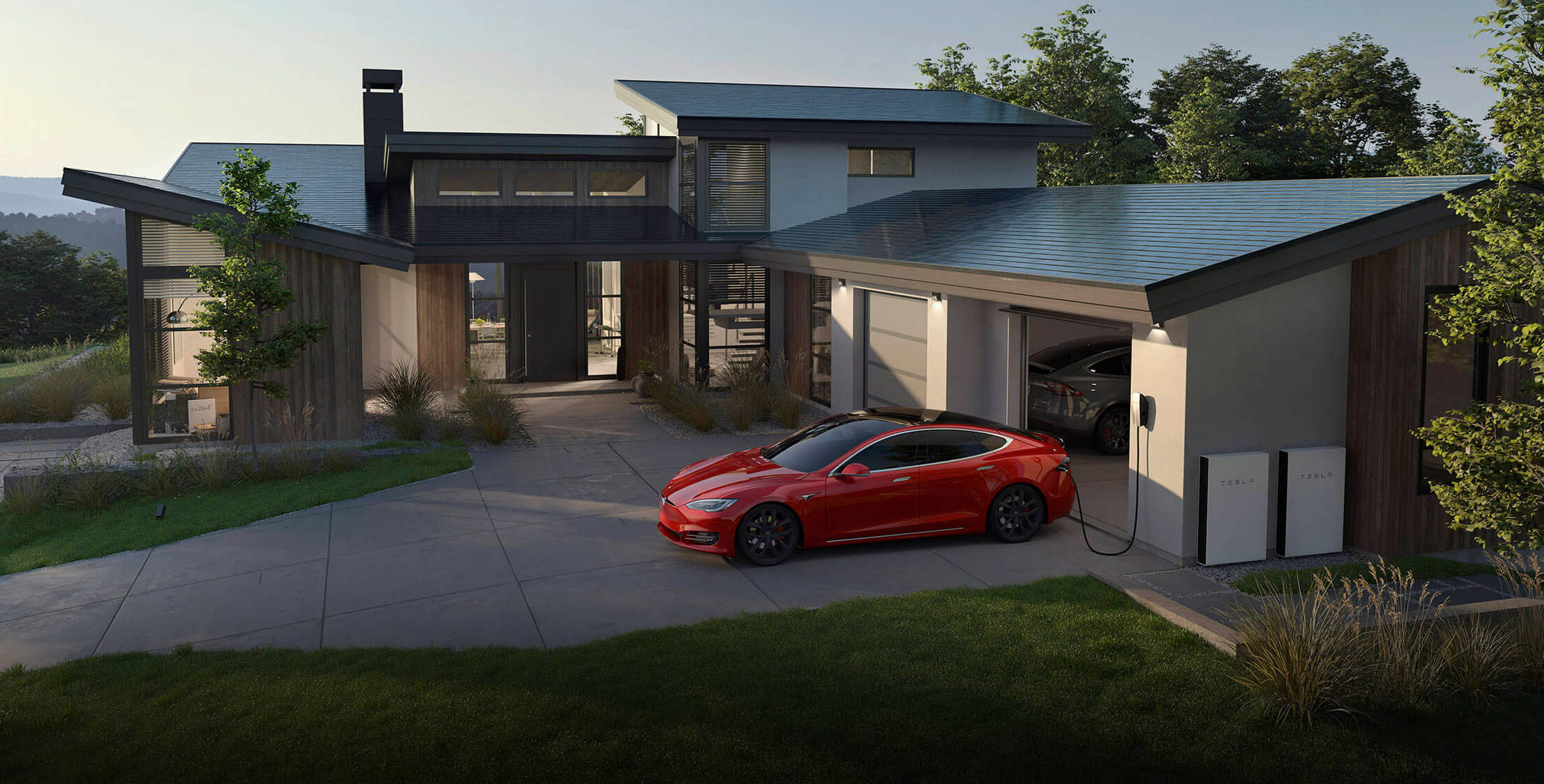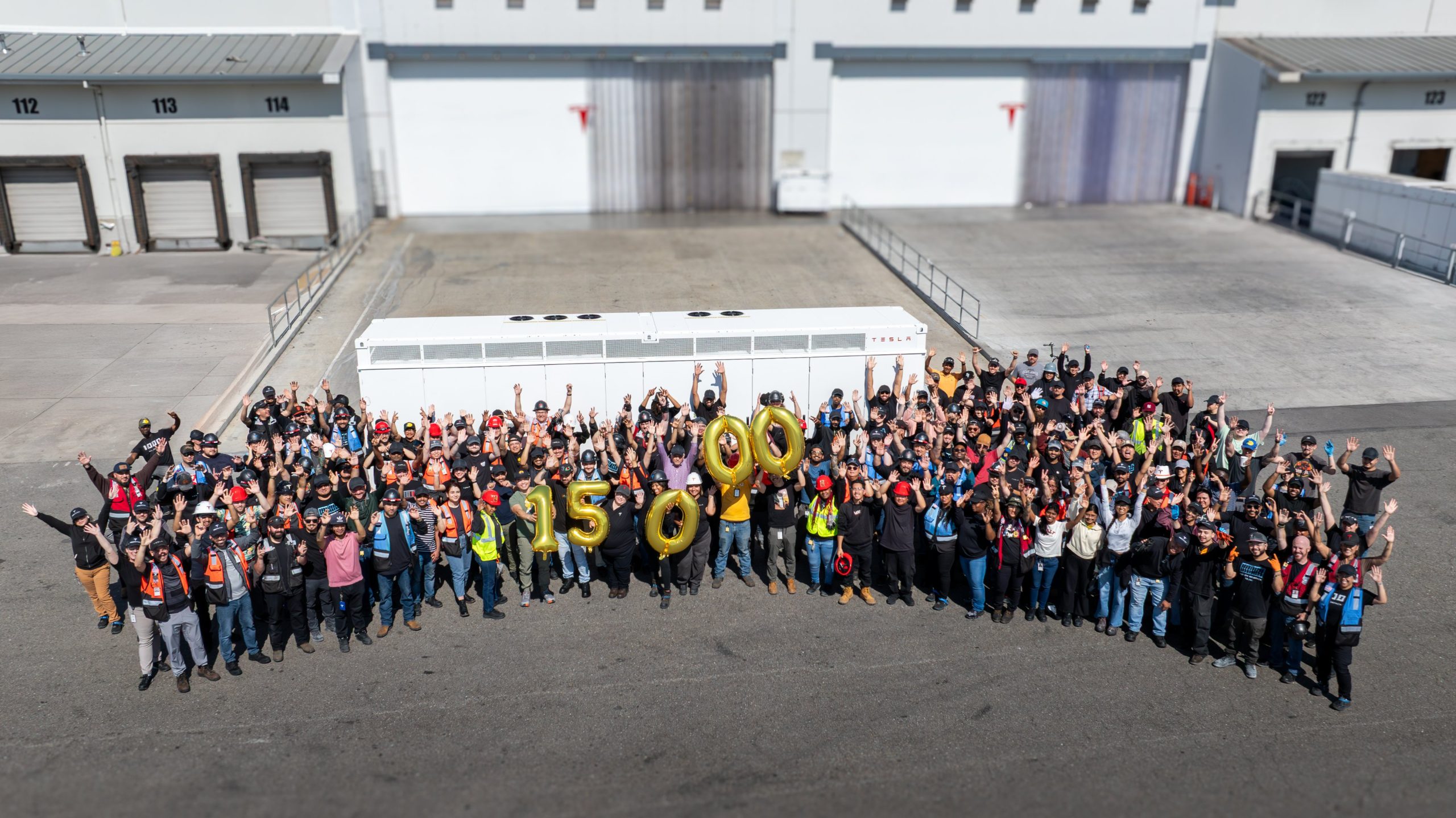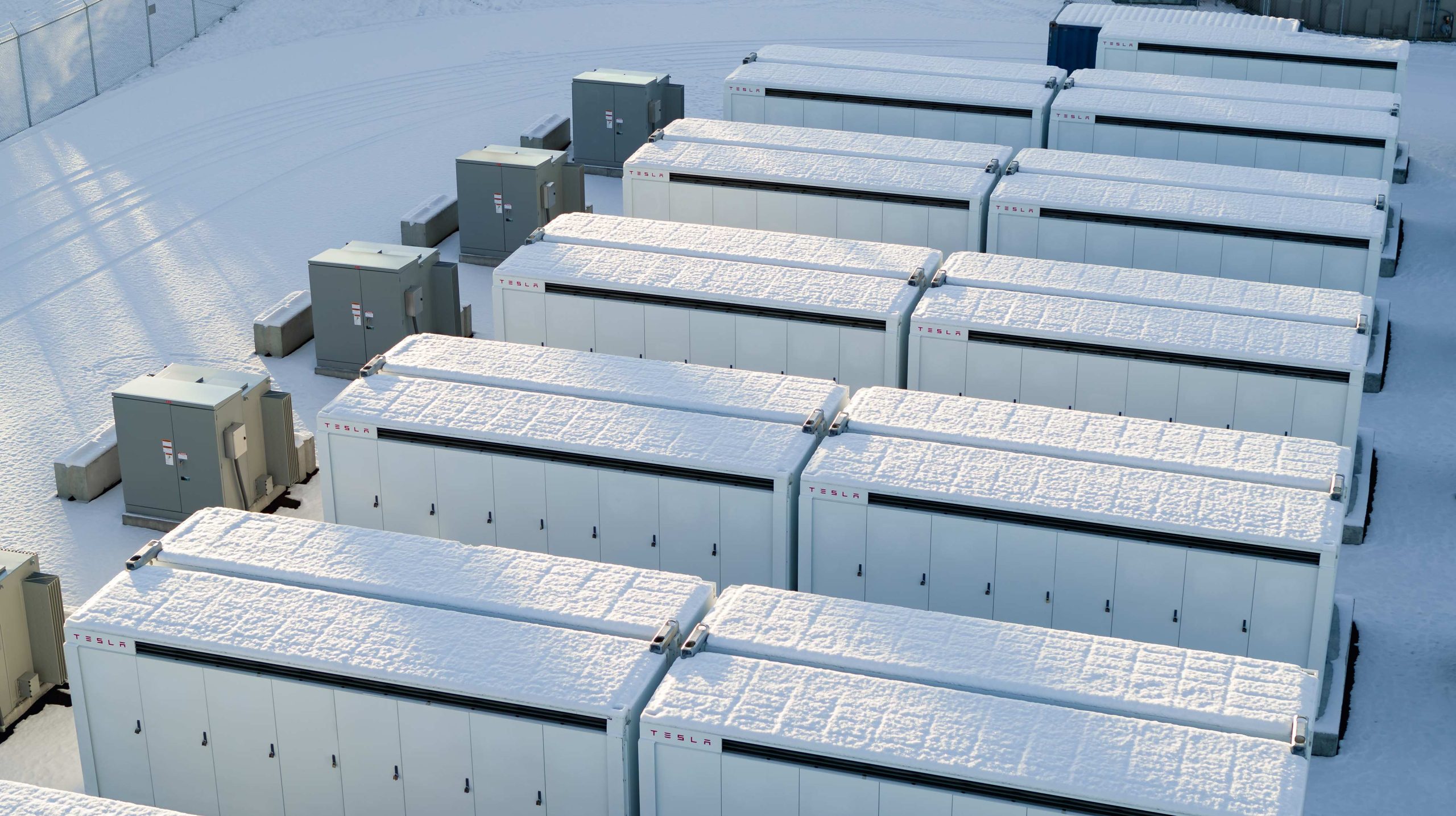

Energy
Tesla becomes world’s most valuable “automaker”, but the story goes well beyond cars
Tesla has officially become the world’s most valuable automaker, surpassing Toyota Motor Corporation on Wednesday morning. However, Tesla is much more than an automaker, and its success has a lot to do with its other sustainable projects.
Tesla now holds an over $185 billion market capitalization, meaning the total value of all of the automaker’s shares of stock is worth more than any other carmaker on Earth. Toyota now sits in second place, with its $178 billion market cap.
Interestingly enough, Tesla’s solidification as the most valuable carmaker is eye-opening simply because the company does so much more than build sustainable vehicles. Tesla has become a leader in energy storage and solar solutions, something that no other carmaker in the world can say. While car companies continue to chase after Tesla’s industry-leading efficiency and technology, its focus remains on accelerating sustainability as a whole, and not just through vehicle manufacturing.
https://twitter.com/ElonsWorld/status/1270712021357658114
At the time of writing, Tesla shares were trading a few dollars above the $1,000 per share mark. At that price, the market cap stands at $185.10 billion.
Tesla overtook German automaker Volkswagen for the second-most valuable carmaker label in February. Volkswagen currently sits in third with an $85.53 billion market cap.
TSLA stock has continued to rise amid rising production rates and sales figures in China, the world’s largest automotive market. However, developments in battery technology and rumors of an upcoming million-mile capable battery pack have helped the electric automaker’s stock price soar in the past months.
On the energy front, Tesla has ramped its Solar Roof to a 4 MW per week production rate. The company indicated in the Q1 2020 Update Letter that this is enough for 1,000 homes. The implementation of rental and subscription services has also helped the company’s solar initiatives be affordable for more people.
On the morning of June 10, TSLA stock officially crossed the $1,000 per share threshold for the first time after rumors of a production push of the company’s Semi circulated. The talks, which were confirmed by company CEO Elon Musk, indicated production volumes would no longer be limited. The Semi was geared for initial deliveries in 2021, but Musk has decided to ramp up the manufacturing of the company’s commercial vehicle.
Meanwhile, Model 3 continues to dominate in nearly every country it is available. The car was the best selling electric vehicle in China in May, selling over 11,000 units during the month. In the United States, the Model 3 was the most popular vehicle in California through the first quarter of 2020.
After Tesla managed to reopen its vehicle production facility in Fremont, California, following the COVID-19 pandemic, the company has ramped up production of the Model Y, which has become the company’s main focus for the coming months.
Tesla is also looking to increase its production rate by opening up a series of new manufacturing facilities across the globe. Not only will the company open a new U.S.-based factory in the Central United States. Tulsa, Oklahoma, and Austin, Texas, are the two finalists for the new factory, with a decision expected to be made within the coming months.
Additionally, the company’s foreign presence is being ramped up. Not only is Giga Shanghai’s Model Y facility, known as Phase 2A, coming along in a timely fashion, but Tesla’s construction crews also recently broke ground on Giga Berlin in Germany. Tesla plans to manufacture half-a-million vehicles a year in Germany, and rumors have even suggested another European production plant will be built somewhere in the United Kingdom.
Tesla is riding a wave of momentum that has taken it from a small, likely unsuccessful car startup that was plagued with issues in 2008, to the most valuable automaker in the world in 2020. Not only has Tesla established itself as the leader in American EV manufacturing, but the company has launched itself into an international powerhouse that has combined electric mobility with sustainable energy solutions to become an international sensation.
Energy
Tesla Lathrop Megafactory celebrates massive Megapack battery milestone
The Tesla Megapack is the backbone of Tesla Energy’s battery deployments.

The Tesla Lathrop Megafactory recently achieved a new milestone. As per the official Tesla Megapack account on X, the Lathrop Megafactory has produced its 15,000th Megapack 2 XL battery.
15,000 Megapack Batteries
Tesla celebrated the milestone with a photo of the Lathrop Megafactory team posing with a freshly produced Megapack battery. To commemorate the event, the team held balloons that spelled out “15,000” as they posed for the photo.
The Tesla Megapack is the backbone of Tesla Energy’s battery deployments. Designed for grid-scale applications, each Megapack offers 3.9 MWh of energy and 1.9 MW of power. The battery is extremely scalable, making it perfect for massive energy storage projects.
More Megafactories
The Lathrop Megafactory is Tesla’s first dedicated facility for its flagship battery storage system. It currently stands as the largest utility-scale battery factory in North America. The facility is capable of producing 10,000 Megapack batteries every year, equal to 40 GWh of clean energy storage.
Thanks to the success of the Megapack, Tesla has expanded its energy business by building and launching the Shanghai Megafactory, which is also expected to produce 40 GWh of energy storage per year. The ramp of the Shanghai Megafactory is quite impressive, with Tesla noting in its Q1 2025 Update Letter that the Shanghai Megafactory managed to produce over 100 Megapack batteries in the first quarter alone.
Tesla Energy’s Potential
During the first quarter earnings call, CEO Elon Musk stated that the Megapack is extremely valuable to the energy industry.
“The Megapack enables utility companies to output far more total energy than would otherwise be the case… This is a massive unlock on total energy output of any given grid over the course of a year. And utility companies are beginning to realize this and are buying in our Megapacks at scale,” Musk said.
Energy
Tesla Megapacks powers the xAI Colossus supercomputer
Tesla Megapacks step in to stabilize xAI’s Colossus supercomputer, replacing natural gas turbines. Musk’s ventures keep intertwining.

Tesla Megapack batteries will power the xAI Colossus supercomputer in Memphis to ensure power stability. The collaboration between Tesla and xAI highlights the synergy among Elon Musk’s ventures.
The artificial intelligence startup has integrated Tesla Megapacks to manage outages and demand surges, bolstering the facility’s reliability. The Greater Memphis Chamber announced that Colossus, recently connected to a new 150-megawatt electric substation, is completing its first construction phase. This transition addresses criticism from environmental justice groups over the initial use of natural gas turbines.
“The temporary natural gas turbines that were being used to power the Phase I GPUs prior to grid connection are now being demobilized and will be removed from the site over the next two months.
“About half of the operating turbines will remain operating to power Phase II GPUs of xAI until a second substation (#22) already in construction is completed and connected to the electric grid, which is planned for the Fall of 2025, at which time the remaining turbines will be relegated to a backup power role,” the Chamber stated.
xAI’s rapid development of Colossus reflects its ambition to advance AI capabilities, but the project has faced scrutiny for environmental impacts. The shift to Megapacks and grid power aims to mitigate these concerns while ensuring operational continuity.
The Megapack deployment underscores the collaboration among Musk’s companies, including Tesla, SpaceX, Neuralink, and The Boring Company. Tesla appears to be the common link between all of Musk’s companies. For example, The Boring Company built a tunnel in Giga, Texas. In addition, Musk has hinted at a potential collaboration between the Tesla Optimus Bot and Neuralink. And from January 2024 to February 2025, xAI invested $230 million in Megapacks, per a Tesla filing.
Tesla Energy reported a 156% year-over-year increase in Q1 2025, deploying 10.4 GWh of storage products, including Megapacks and Powerwalls. Tesla’s plans for a new Megapack factory in Waller County, Texas, which is expected to create 1,500 jobs in the area, further signal its commitment to scaling energy solutions.
As xAI leverages Tesla’s Megapacks to power Colossus, the integration showcases Musk’s interconnected business ecosystem. The supercomputer’s enhanced stability positions xAI to drive AI innovation, while Tesla’s energy solutions gain prominence, setting the stage for broader technological and economic impacts.
Energy
Tesla Energy celebrates one decade of sustainability
Tesla Energy has gone far since its early days, and it is now becoming a progressively bigger part of the company.

Tesla Energy recently celebrated its 10th anniversary with a dedicated video showcasing several of its milestones over the past decade.
Tesla Energy has gone far since its early days, and it is now becoming a progressively bigger part of the company.
Tesla Energy Early Days
When Elon Musk launched Tesla Energy in 2015, he noted that the business is a fundamental transformation of how the world works. To start, Tesla Energy offered the Powerwall, a 7 kWh/10 kWh home battery system, and the Powerpack, a grid-capable 100 kWh battery block that is designed for scalability. A few days after the products’ launch, Musk noted that Tesla had received 38,000 reservations for the Powerwall and 2,500 reservations for the Powerpack.
Tesla Energy’s beginnings would herald its quiet growth, with the company later announcing products like the Solar Roof tile, which is yet to be ramped, and the successor to the Powerwall, the 13.5 kWh Powerwall 2. In recent years, Tesla Energy also launched its Powerwall 3 home battery and the massive Megapack, a 3.9 MWh monster of a battery unit that has become the backbone for energy storage systems across the globe.
Key Milestones
As noted by Tesla Energy in its recent video, it has now established facilities that allow the company to manufacture 20,000 units of the Megapack every year, which should help grow the 23 GWh worth of Megapacks that have already been deployed globally.
The Powerwall remains a desirable home battery as well, with more than 850,000 units installed worldwide. These translate to 12 GWh of residential entry storage delivered to date. Just like the Megapack, Tesla is also ramping its production of the Powerwall, allowing the division to grow even more.
Tesla Energy’s Role
While Tesla Energy does not catch as much headlines as the company’s electric vehicle businesses, its contributions to the company’s bottom line have been growing. In the first quarter of 2025 alone, Tesla Energy deployed 10.4 GWh of energy storage products. Powerwall deployments also crossed 1 GWh in one quarter for the first time. As per Tesla in its Q1 2025 Update Letter, the gross margin for the Energy division has improved sequentially as well.
-

 Elon Musk1 day ago
Elon Musk1 day agoTesla investors will be shocked by Jim Cramer’s latest assessment
-

 News6 days ago
News6 days agoTesla Robotaxi’s biggest challenge seems to be this one thing
-

 News2 weeks ago
News2 weeks agoTesla’s Grok integration will be more realistic with this cool feature
-

 Elon Musk2 weeks ago
Elon Musk2 weeks agoElon Musk slams Bloomberg’s shocking xAI cash burn claims
-

 News2 weeks ago
News2 weeks agoTesla China roars back with highest vehicle registrations this Q2 so far
-

 News2 weeks ago
News2 weeks agoTexas lawmakers urge Tesla to delay Austin robotaxi launch to September
-

 News2 weeks ago
News2 weeks agoTesla dominates Cars.com’s Made in America Index with clean sweep
-

 Elon Musk1 week ago
Elon Musk1 week agoFirst Look at Tesla’s Robotaxi App: features, design, and more















